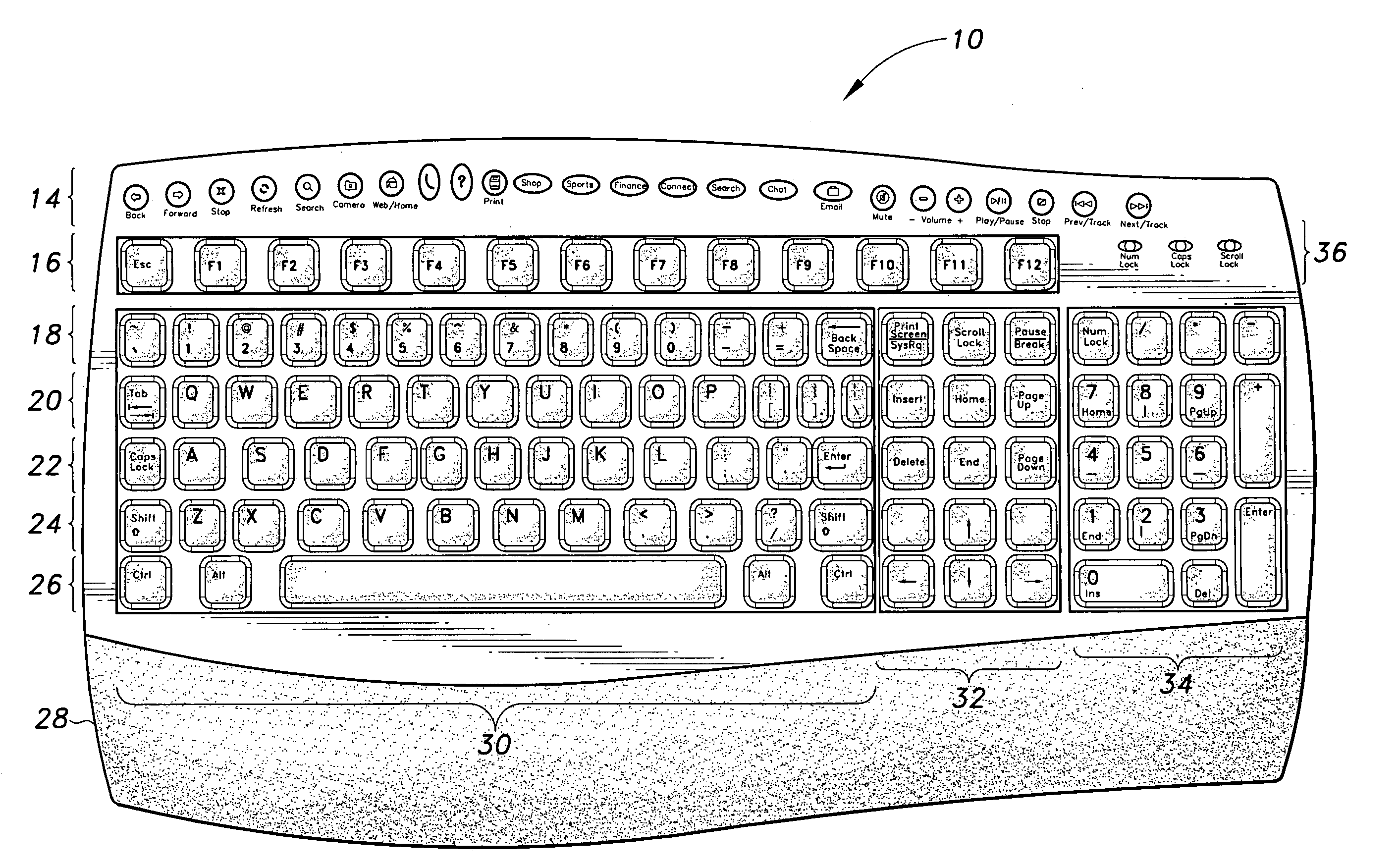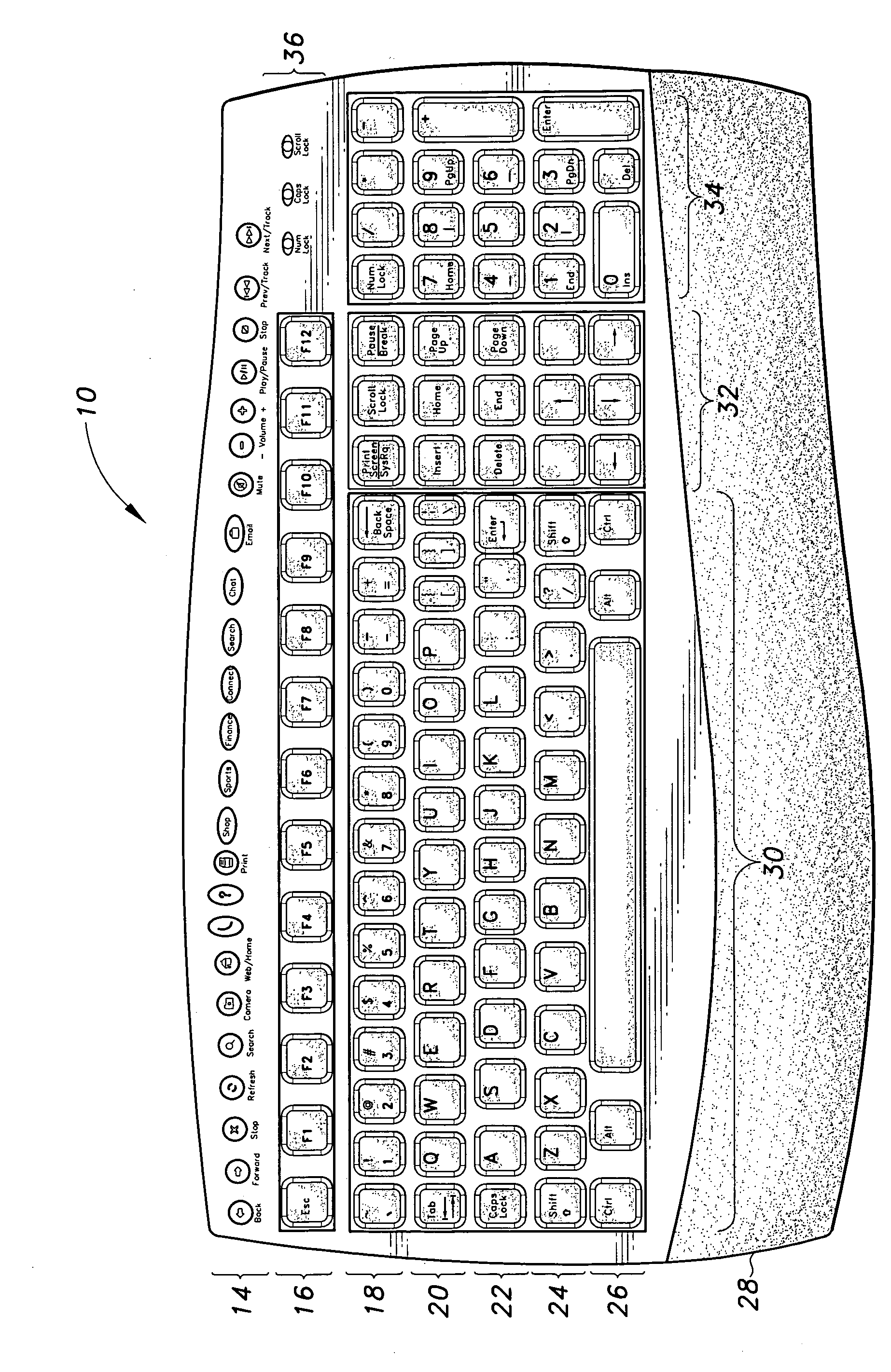Computer keyboard
a keyboard and computer technology, applied in the field of computer keyboards, can solve problems such as non-uniform keys
- Summary
- Abstract
- Description
- Claims
- Application Information
AI Technical Summary
Problems solved by technology
Method used
Image
Examples
Embodiment Construction
[0018] The drawing shows an exemplary computer keyboard 10 that is based on QWERTY keyboard layout. The differences between the standard QWERTY keyboard and the presently disclosed one lies in the subtle size differences and spacing differences between the keys.
[0019] Keyboard 10 has seven rows of keys. Each key on keyboard 10 belongs to one of the seven rows. The exceptions are the “+” key and the “Enter” keys on numeric keypad 34, which each belong to two rows, as will be further explained below.
[0020] Wrist support 28 may be provided for improved ergonomics and may be detachable, as is known.
[0021] In addition, each key in rows 16-26 belongs to one of three key groups. The major portion of the keyboard will be referred to as typewriter section 30, and contains all lettered keys, and number, symbol, Tab, Shift, Alt, Ctrl, Enter, and Space keys. Lettered keys are keys that correspond to letters of an alphabet. To the right of typewriter section 30 is cursor key section 32, which...
PUM
 Login to View More
Login to View More Abstract
Description
Claims
Application Information
 Login to View More
Login to View More - R&D
- Intellectual Property
- Life Sciences
- Materials
- Tech Scout
- Unparalleled Data Quality
- Higher Quality Content
- 60% Fewer Hallucinations
Browse by: Latest US Patents, China's latest patents, Technical Efficacy Thesaurus, Application Domain, Technology Topic, Popular Technical Reports.
© 2025 PatSnap. All rights reserved.Legal|Privacy policy|Modern Slavery Act Transparency Statement|Sitemap|About US| Contact US: help@patsnap.com


